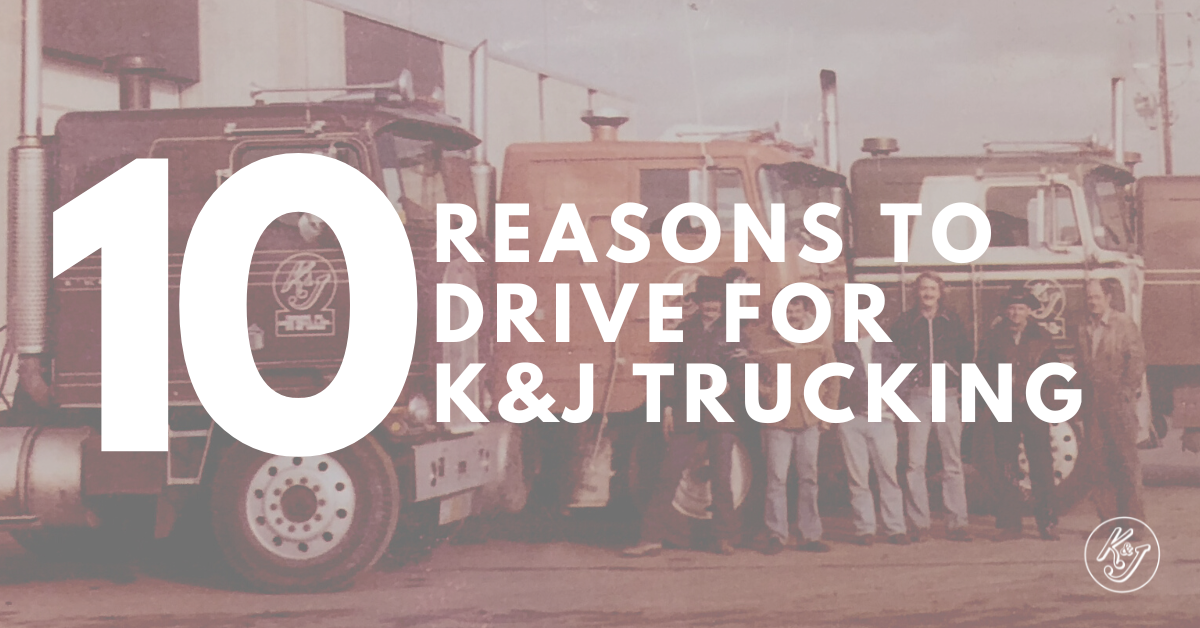Are the Hours of Service Regulations Actually Keeping You Safe?

4 years after enforcement began on the latest hours of service regulations, do you feel like you are actually safer on the road? Do you feel less fatigued? Because this was the stated goal of the FMCSA when implementing the new rule. We take a look at the hours of service regulations, the historical impact, and how the killer combination of the ELD mandate with HOS regulations is changing the landscape of trucking.
What is the Rule?
The FMCSA regulations are long and complicated. In a nutshell they state that drivers carrying freight (like the freight of K&J drivers) must work within 3 key restrictions every day.
1. They can not be working (driving, loading, unl oading, paperwork, etc.) more than 70 hours every 8 days.
2. Each day when a driver starts their day they "clock in." This starts a 14 hour clock. During these 14 hours they can drive a maximum of 11 hours with a break of at least 30 minutes required after 8 hours worked.
3. During this same 24 hours they must have at least 10 hours of rest. This can be broken into multiple periods but one period must be at least 8 hours.
What is the Purpose of the Hours of Service Rule?
The stated purpose of the rule, according to the FMCSA is "to reduce the possibility of driver fatigue. Long daily and weekly hours are associated with an increased risk of crashes and with the chronic health conditions associated with lack of sleep. These changes will affect only the small minority of drivers who regularly work the longer hours."
Hours of Service Isn't a New Problem
When you look at the letter of the law, the hours of service regulations are not a new problem. Hours of service rules have been in place since 1938. The law as it currently stands has been on the books since 2011 and enforced since June of 2013. So why all the fuss now about the HOS rules?
While no one wants to admit it, the reality is that prior to the ELD mandate, many truckers fudged their books in order to comply with the hours of service law. With electronic reporting in place, drivers can't "massage the books" in their favor and this is causing a ripple effect. Like it or not, the full impact of this damaging law has been felt more acutely as companies roll out their ELD programs.
Rather than shaming truck drivers for cooking their books, we need to understand why they felt they had to in the first place.
Kathy's Schedule
To illustrate the reality drivers work under, we will use an imaginary truck driver with a very realistic schedule. Let's call her Kathy.
Kathy gets up and starts her day at 6 AM.
Because of her 6 AM start, Kathy has until 8 PM to get her 11 hours of driving in.
She has a delivery to make at 8 AM and the customer, in Chicago, doesn't like trucks parked on their property so she had to park at a truck stop. She chose to start driving at 6 AM even though she only needs to drive 10 miles because she knows that with her location she is likely to hit rushhour traffic.
Kathy arrives at the customer at 7:38 AM and pulls up to receiving. Unfortunately the customer takes 4 hours to unload her truck and Kathy fails to get in the sleeper berth (which would mean she could have counted 2 of the hours as part of her 10 rest hours) because she didn't think the customer would take nearly that long.
I'm It is now 12 PM and Kathy has already spent 6 of her 11 hours... driving a total of 10 miles. Kathy has another load to pick up in Chicago that is due in Omaha tomorrow morning, but she only has 5 hours left to drive in her day.
Now, before you judge Kathy as the exception, or a poor planner, realize that these stories happen every day. In theory, the hours of service regulations sound like a great way to prevent driver fatigue. In reality, Kathy is now going to spend the rest of her day restricting her water intake so she can make the most of her remaining hours and hope to make up some of the loss she experienced in the morning.
The Harsh Reality
What works in a book doesn’t work in real life. What about traffic? What about slow shippers and receivers? What about unexpected storms or traffic accidents blocking the roadway? The reality is this 14-hour rule penalizes drivers who take rests or breaks, many in response to fatigue or in an effort to maintain healthy habits.
What we are saying with our current hours of service rules are that we don't trust truck drivers to know their own bodies as well as we do. In fact, we have heard sentiments like these from the mouths of our own drivers.
"I feel like I don't have time anymore to take a nap if I need to and when I need to if it doesn't match up with the regulations."
"I don't drink a lot of water when I'm on duty because then I need to use the facilities and that cuts into my hours. It isn't that I don't want to take care of myself, but I can't afford to."
"It isn't that any of us want to work more than 11 hours! We just want to be given the freedom and respect to drive those 11 hours when it makes sense for our bodies."
Moving Toward Change
In the coming weeks and months we will be updating you on how you can join us in encouraging lawmakers to take another look at the 14-hour rule and arrive at something that actually protects truck drivers, prevents accidents, and addresses health concerns. Follow along by subscribing to our blog. And let us know; do you feel the hours of service regulations are keeping you safe?
Learn about what makes K&J different, or share this with a trucking friend! We are always looking for great drivers to join our family.

